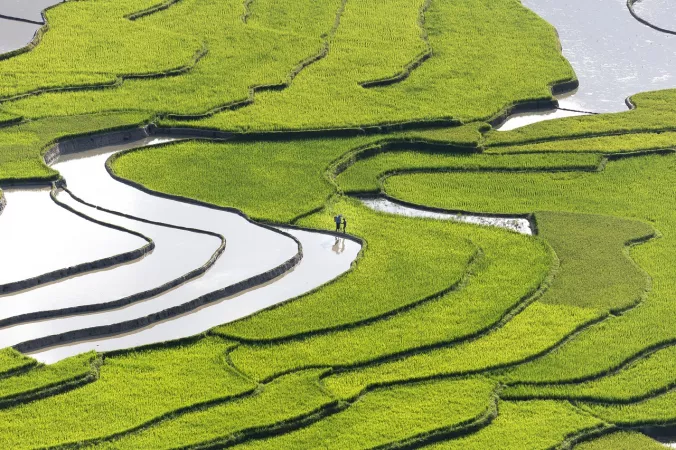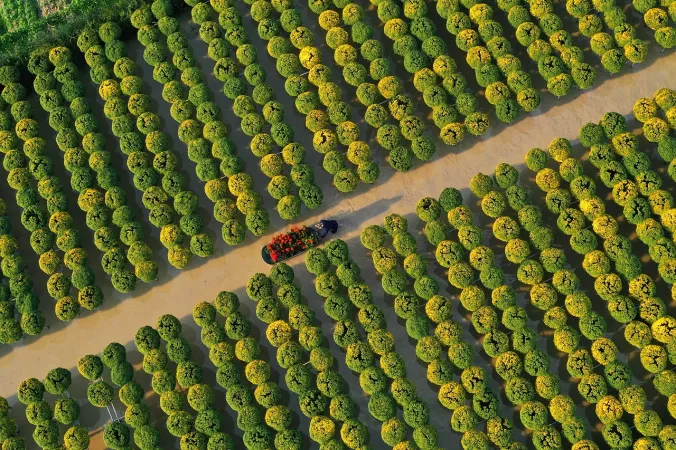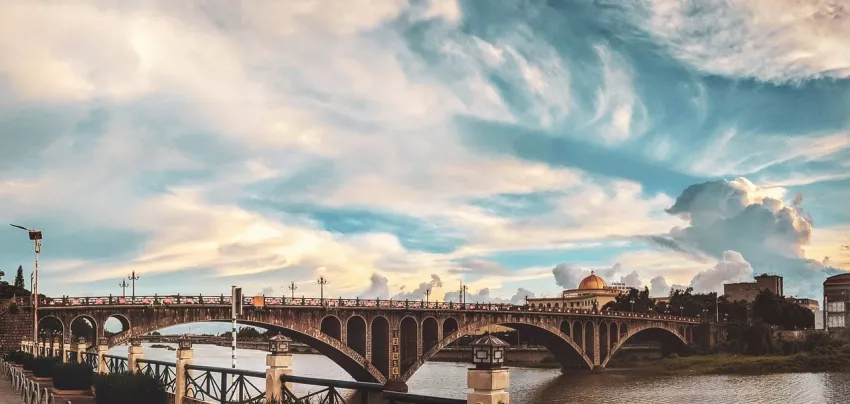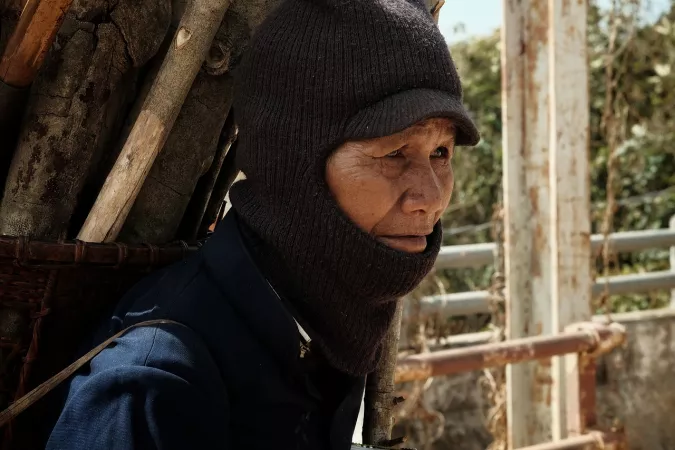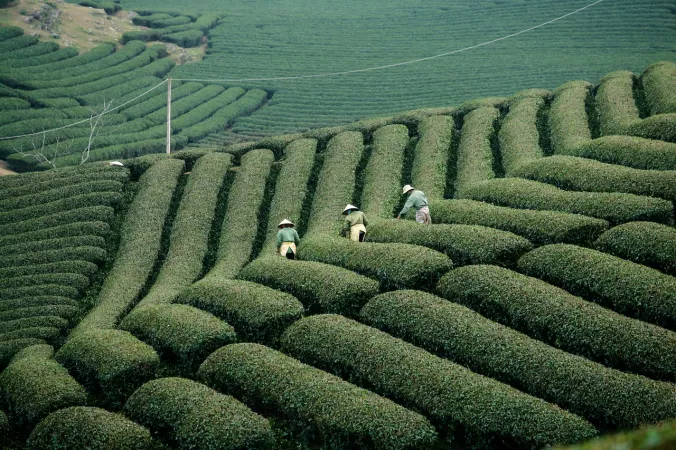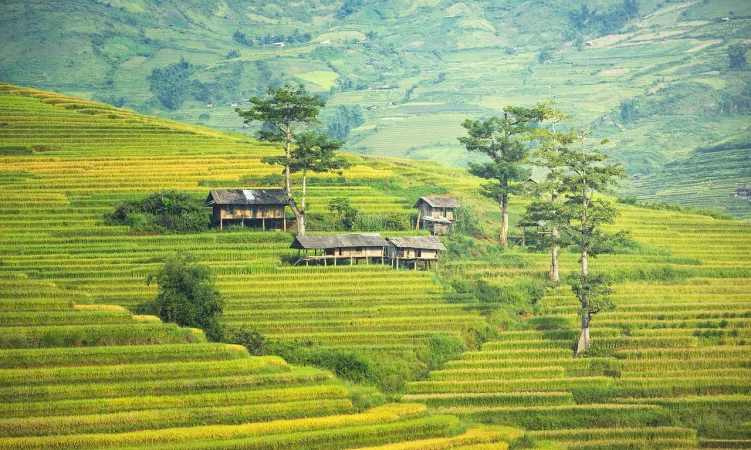
Sapa Travel Guide
Sapa, a charming town nestled in the Hoàng Liên Son Mountains of northwestern Vietnam, is renowned for its stunning landscapes, rich cultural diversity, and vibrant hill tribes. This picturesque destination is famous for its terraced rice fields, misty mountains, and authentic ethnic minority villages. The region's history dates back to the French colonial period, adding to its allure and cultural significance.Top Attractions in Sapa
- Ma Tra Village
- Fansipan Mountain
- Cat Cat Village
- Silver Waterfall
- Love Waterfall
Sapa is Famous for
Sapa is famous for its breathtaking rice terraces and the unique hill tribes that call this region home.Top Attractions in Sapa
- Exploring the terraced rice fields
- Interacting with the local hill tribes
- Hiking to the summit of Fansipan Mountain
- Visiting the bustling markets
- Enjoying the scenic waterfalls
What's Great about Travelling to Sapa?
- Experience authentic hill tribe culture
- Immerse yourself in stunning natural landscapes
- Enjoy adventurous trekking opportunities
- Sample delicious local cuisine
What's Not So Great about Travelling to Sapa?
- Challenging terrain for those with mobility issues
- Weather can be unpredictable with frequent rain
- Limited nightlife and entertainment options
- Crowded during peak tourist seasons
Travel Tips for Sapa
- Obtain a visa before arrival
- Book homestays in advance for an authentic experience
- Bring suitable footwear for trekking
- Be prepared for varying weather conditions
Important Sapa trip information
- Ideal Duration: 3-4 days
- Best Time to Visit: March to May and September to November
- Nearby Airports and Railway Stations: The nearest airport is in Hanoi, and the closest railway station is in Lao Cai
FAQ's on Sapa
Q1: What is the best time to visit Sapa?
The best time to visit Sapa is from March to May and September to November. During these months, the weather is mild, and you can enjoy the beautiful terraced rice fields and clear skies. Avoid the rainy season from June to August, as it can make trekking challenging due to muddy trails. Winter months from December to February can be cold, but offer a unique experience with fog-covered landscapes.
Q2: Do I need a visa to travel to Sapa?
Most visitors to Sapa will need a visa to enter Vietnam. Check the specific visa requirements based on your nationality. Vietnam offers e-visas for many countries, making the application process convenient. Make sure your passport is valid for at least six months beyond your planned stay. Exemptions may apply for certain countries, so it's advisable to check with the Vietnamese embassy or consulate.
Q3: What are the must-visit attractions in Sapa?
Sapa is known for its stunning landscapes, such as the terraced rice fields of Muong Hoa Valley and the Fansipan Mountain, the highest peak in Indochina. Visit the vibrant Sapa Market to experience the local culture and shop for handmade crafts. Explore the ethnic minority villages like Cat Cat Village and Ta Phin Village to learn about their traditional way of life. Don't miss the Love Waterfall and Silver Waterfall for their natural beauty.
Q4: Is Sapa a safe place to travel?
Sapa is generally a safe destination for travelers. However, like any place, it's essential to take precautions. Be cautious of pickpockets in crowded areas and secure your belongings. While trekking, stick to marked trails and hire local guides for a safe experience. Avoid walking alone at night in remote areas. Stay updated on weather conditions, especially during the rainy season, to ensure your safety. Overall, Sapa is a peaceful and welcoming destination.
Q5: What is the local currency in Sapa and can I use credit cards?
The official currency in Sapa is the Vietnamese Dong (VND). While credit cards are accepted in some hotels, restaurants, and larger establishments, it's advisable to carry cash for smaller purchases and in rural areas. ATMs are available in Sapa town for currency exchange and withdrawals. Inform your bank of your travel plans to avoid any issues with card usage. Be prepared with cash for markets, local vendors, and transportation services that may not accept cards.
Q6: What is the local cuisine like in Sapa?
Sapa offers a diverse culinary experience with influences from the local ethnic tribes and Vietnamese cuisine. Try the hearty "thang co" (horse meat stew) or the flavorful "com lam" (bamboo-tube rice). Sample the fresh mountain vegetables and herbs used in dishes like grilled pork in wild leaves or "au tau" (bamboo shoot soup). Don't miss the opportunity to taste the local specialty, "cap nach" chicken, known for its tender meat. Vegetarians will find options like tofu dishes and fresh salads. Embrace the local food culture by enjoying meals in homestays and trying traditional cooking techniques.
Q7: What transportation options are available in Sapa?
In Sapa, transportation options include taxis, motorbike rentals, and local buses. Most visitors prefer to explore the region on foot or by hiring a local guide for trekking adventures. Renting a motorbike or hiring a private car is convenient for exploring nearby attractions like Bac Ha Market or Lao Chai Village. Local buses connect Sapa to major cities like Hanoi and Lao Cai for long-distance travel. Shared vans and sleeper buses are popular choices for overnight journeys. Taxis are available in Sapa town for short distances, but negotiate fares in advance. Enjoy the scenic views while traveling around Sapa, but be prepared for winding mountain roads.
Q8: Are there any cultural norms or etiquette I should be aware of when visiting Sapa?
When visiting Sapa, respect the local customs and traditions of the ethnic minority groups. Dress modestly, especially when visiting villages or religious sites. Remove your shoes before entering someone's home and ask for permission before taking photographs of locals. Greet people with a smile and a nod of the head as a sign of respect. Participate in cultural activities like traditional dance performances or handicraft demonstrations to support the local community. Avoid pointing at people or objects, as it can be considered rude. Learn a few basic phrases in the local dialects to communicate with villagers and show appreciation for their culture. By embracing the local customs, you'll have a more enriching experience in Sapa.
Q9: I am a travel agent. How can I buy travel leads of Sapa?
Register yourself as a travel agent at agents.tripclap.com and then you can buy travel leads to Sapa once your account is approved. For more details contact our support team at +91-8069186564 or support@tripclap.com

